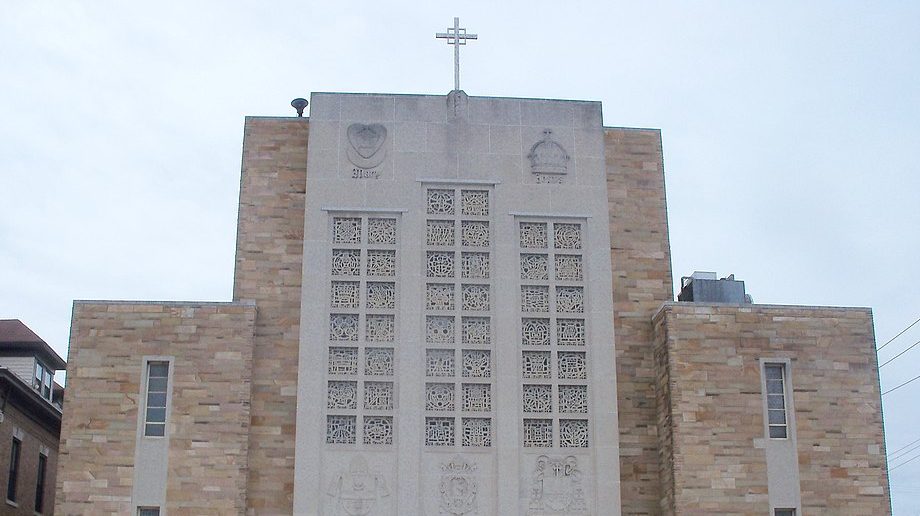Bishop Jeffrey Monforton of Steubenville, Ohio, announced in a message to the diocese on Tuesday that a merger of the local Church with the Diocese of Columbus seems to be the best response to the decline in the area’s population.
“It is with sadness of heart that I share with you the continued decline in the Ohio Valley population and how it adversely affects our future sustainability. Furthermore, we are all too aware how the population is aging as well, to our ministerial detriment,” Monforton wrote in a column for The Steubenville Register published Oct. 11.
“In my discussion with the Ohio bishops it appears a merging of the Diocese of Steubenville with the Diocese of Columbus would be the best solution,” the bishop explained.
The Steubenville diocese comprises 13 counties in southeastern Ohio, and the Columbus diocese, which borders it to the west, includes 23 counties in south-central Ohio. The Steubenville diocese was erected out of the territory of the Diocese of Columbus in 1944.
Dino Orsatti, communications director for the Steubenville diocese, told CNA that “all of the Ohio bishops approved the merger about a year ago.”
Bishop Earl Fernandes of Columbus, who was appointed in April, told CNA that “prior to my arrival, the Ohio bishops discussed the matter of the viability of the Diocese of Steubenville. The Ohio bishops were unanimous that the situation in Steubenville couldn’t continue much longer and referred the matter to the Congregation for Bishops.”
He added that “this matter will now need the approval of the USCCB. There should be a discussion of this during the November Plenary Assembly. At this point, I ask you to keep the Diocese of Steubenville and Bishop Monforton in your prayers as they receive this news."
Orsatti also mentioned that Monforton has had contact with Fernandes “on several occasions about the merger.”
In his column on the suppression of the diocese, Monforton discussed at length the demographic challenges facing Steubenville. The area’s population has been in decline since at least the 1980s.
He noted a 45% decline in the number of persons attending Sunday Mass between 1990 and 2019.
The diocese has 36 active priests, the bishop noted, half of whom are 60 or older. While many dioceses are in similar positions, “we are more vulnerable due to the fact we are small in number, in priests and in Catholics,” he wrote.
While the Steubenville area’s steel industry once employed tens of thousands, “neither the steel nor the coal industries are of any significant economic asset today,” Monforton wrote.
“If local employment opportunities through the diocesan pastoral footprint are not declining, they are stagnant. They are at replacement value at best. Maintaining decline is not an evangelization initiative, nor a goal.”
Monforton indicated that “there is concern about the effectiveness of our diocese in evangelization and celebration of the sacraments a decade from now.”
In addition to the diocese’s active priests, many of whom are nearing retirement, the local Church has five seminarians.
The Steubenville diocese has also experienced financial difficulties in recent years.
In 2020, its former comptroller was sentenced for failing to pay payroll taxes withheld from the paychecks of diocesan employees, filing false tax returns, and embezzling $299,500 in diocesan funds between 2008 and 2017.
And in 2021, the diocese’s former vicar general admitted to diverging nearly $300,000 of diocesan funds for his private use.
The comptroller and vicar general had colluded to “falsify records to conceal the true financial condition of the diocese,” the Weirton Daily Times reported.
In his column, the bishop also noted that the apostolic nuncio and the U.S. bishops’ conference have been made aware of the diocese’s situation.
Monforton asked that the faithful in the diocese respond to a forthcoming survey about how to move forward, recalling “that stubbornness and fortitude are not synonymous. Stubbornness serves self while fortitude, a virtue, serves Christ and his Church. It is with fortitude that we address this sad reality head-on.”
In a similar case, in Alaska, the Diocese of Juneau was in 2020 united with the Archdiocese of Anchorage to create the Archdiocese of Anchorage-Juneau.

